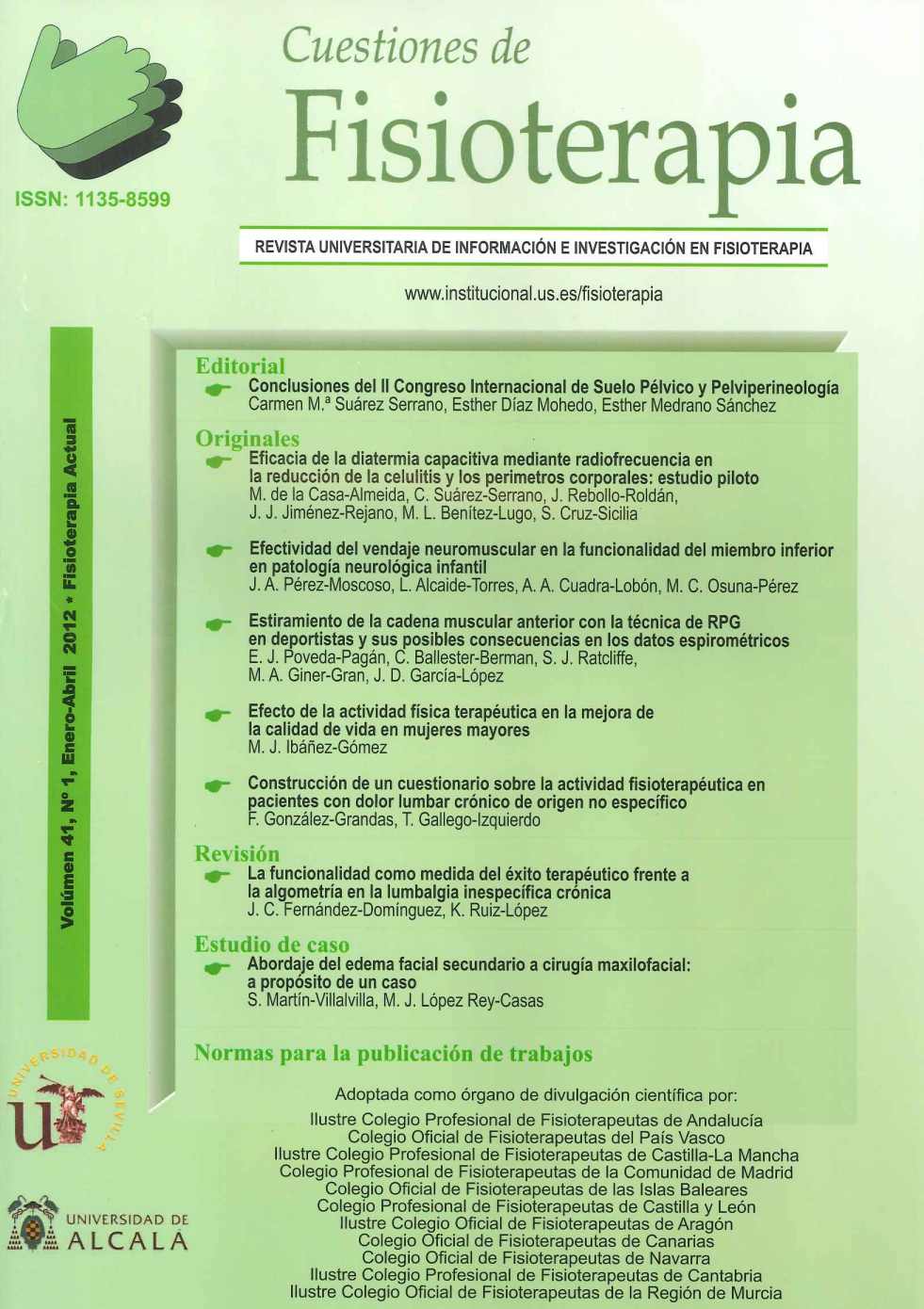Articles
Year 2013, Volume 42, Issue 3
Review of the efficacy of pelvic floor exercises as a method for preventing urinary incontinence in pregnancy
Abstract
Introduction: some women can suffer from urinary problems during pregnancy, especially in their last three months. If urinary incontinence appears at pregnancy, it will probably continue along the following year or will increase its symptoms. Women suffering from urinary incontinence tend to socialize less, reduce their physical activity and they often feel angry or depressed, which makes their quality of life worse. Purpose: to establish in scientific literature an evidence of whether pelvic floor exercises can be a preventive method against urinary incontinence during pregnancy. Material and method: a review was carried out in PUBMED, PEDro, ScienceDirect, Academic Search Premier, CINHAL, Medline (OVID), SpringerLink Journals, Web of Science and in ELSEVIER institutions. A number of articles published in english, spanish or french the last 10 years were included, all of them randomized (controlled trial). No articles were included if the treatment was invasive or women had neurological diseases, urinary infections or perineal damage before delivery. Two systematic reviews and 6 articles were analyzed. Articles were validated with Jadad scale. Number of sessions and samples, type of treatment, measures and final results were the most relevant compared information. Results: after analysing the articles, it was concluded that pelvic floor exercises can work as a key technique in order to prevent urinary incontinence during pregnancy. Conclusions: pelvic floor exercises help pregnant women to prevent urinary incontinence during their last stage of pregnancy and just after giving birth. The repercussions of pelvic floor exercises are not clear in terms of length and type of labour. Further studies are needed in order to evaluate these possible repercussions during birth.
Keywords: pelvic floor, exercises, pregnancy, prevention, urinary incontinence.

